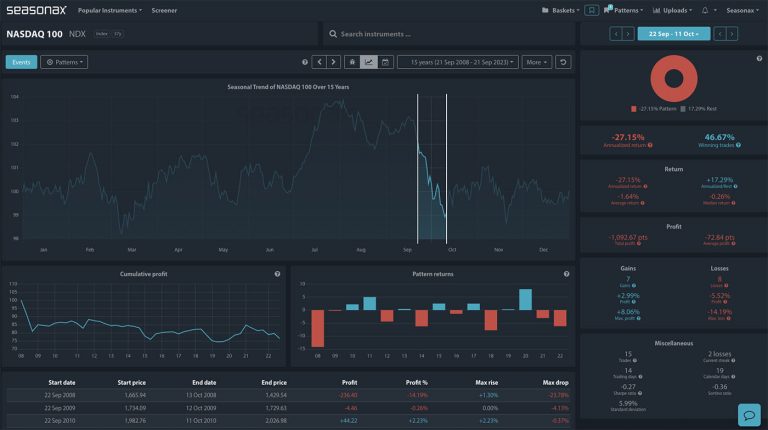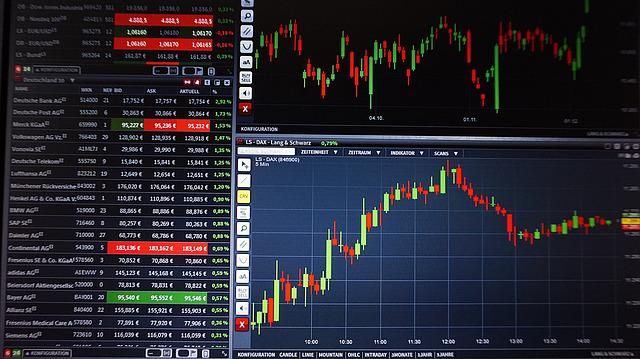- Instrument:AUDJPY
- Percent move of instrument: -1.58%
- Winning trade percentage: 30%
- Start of seasonal pattern: Aug 08
- End of seasonal pattern: Aug 30
Their is a strong seasonal bias for AUDJPY weakness during August. In the last 24 years you can see that the month of August is at the standout month of seasonal weakness with nearly 2% average falls. See the monthly ‘Average return by month’ bar chart below.

Over the last 20 years the AUDJPY pair has fallen 70% of the time for an average return of -1.66%. The largest falls was in 2007 with an 8.38% drop (the maximum fall during the period was over 12%) and the second largest was in the August of 2008 with a fall of 6.25% as investors bought the JPY in the midst of the Global Financial Crisis.

August is traditionally a month of higher market volatility. Traders and investors often reassess their portfolios during the summer, leading to reduced risk appetite. The Japanese yen (JPY) is considered a safe-haven currency, meaning it tends to appreciate during periods of risk aversion as investors move away from riskier assets like the Australian dollar (AUD).
Furthermore, the Bank of Japan is now increasing its interest rates, so a sharp move in higher rates could suddenly add to JPY strength. However, the BoJ have not been a central bank to move quickly or unpredictably, so it would only be strongly unexpected higher inflation data that could sharply change their outlook.
Sign up here for thousands of more seasonal insights just waiting to be revealed!
Trade risks
Previous seasonal patterns do not guarantee future seasonal patterns performance as the AUDJPY is driven by a variety of different factors.
Remember, don’t just trade it Seasonax It!


